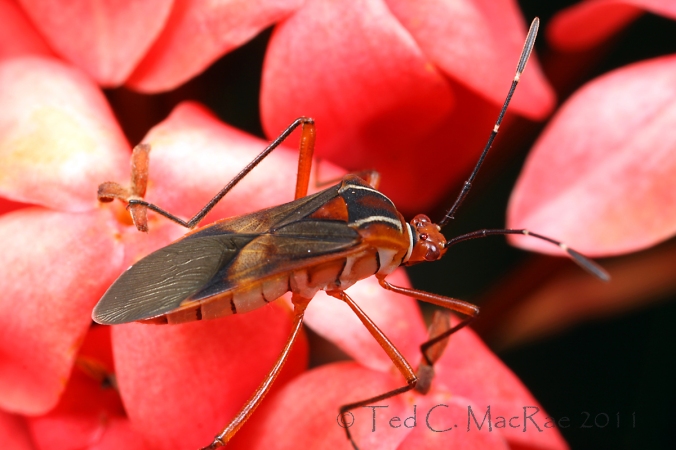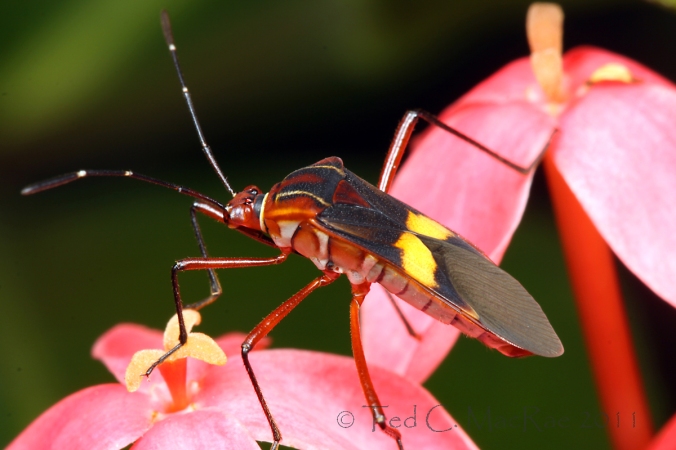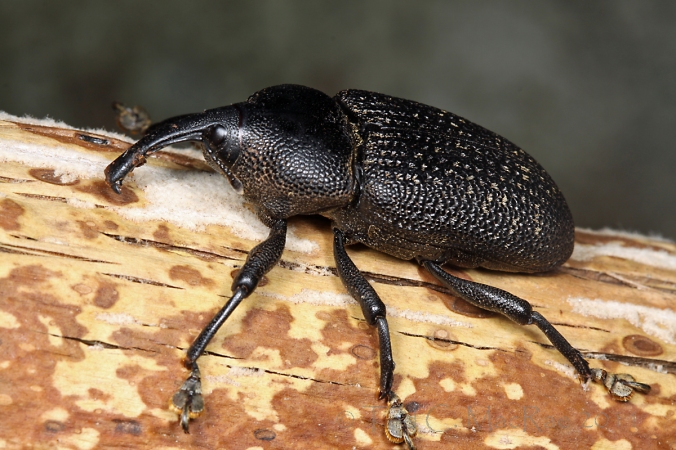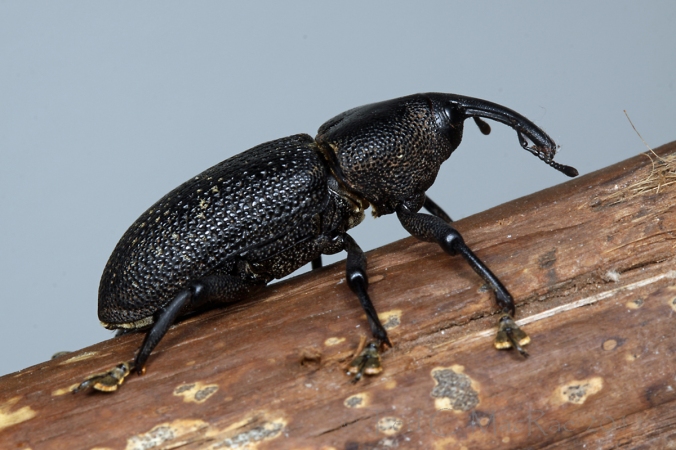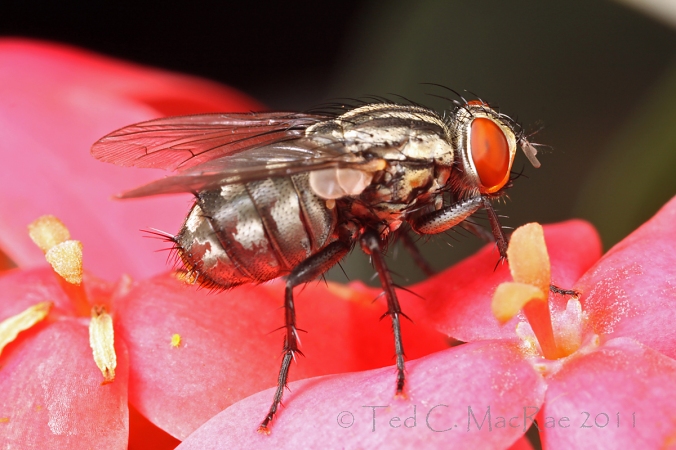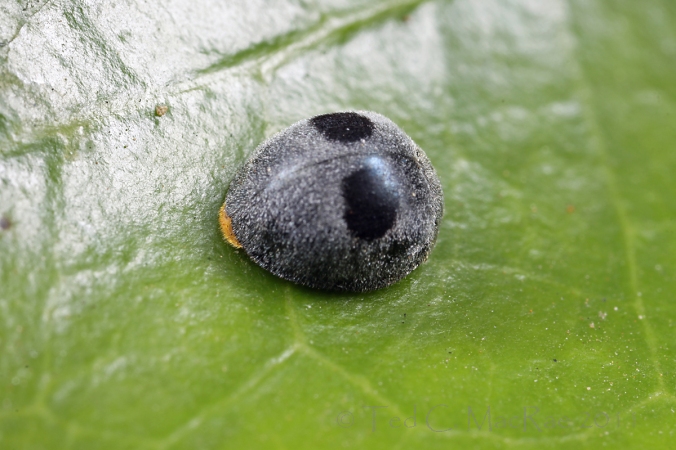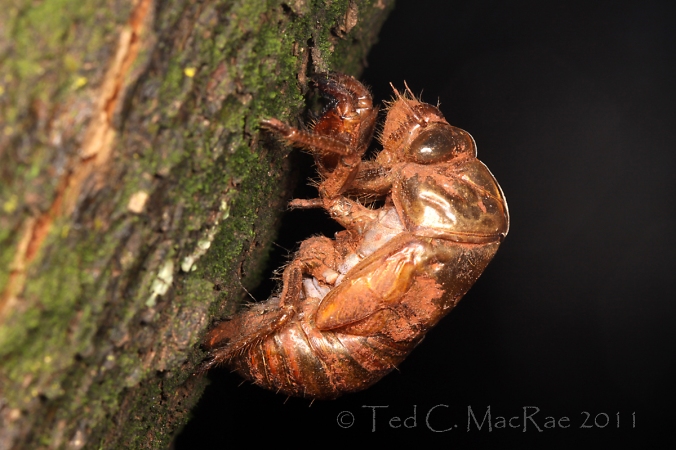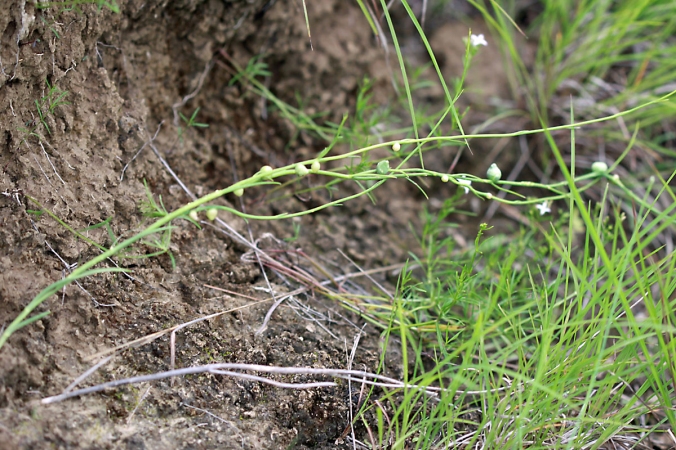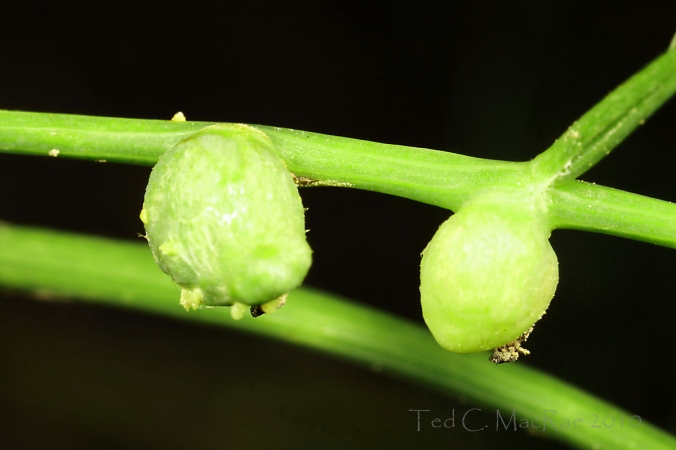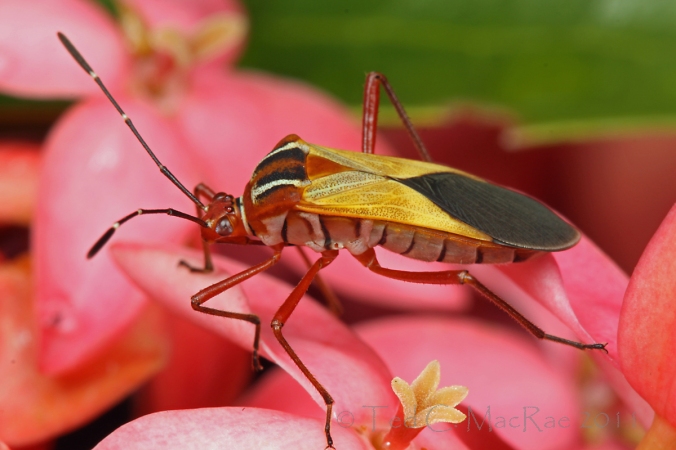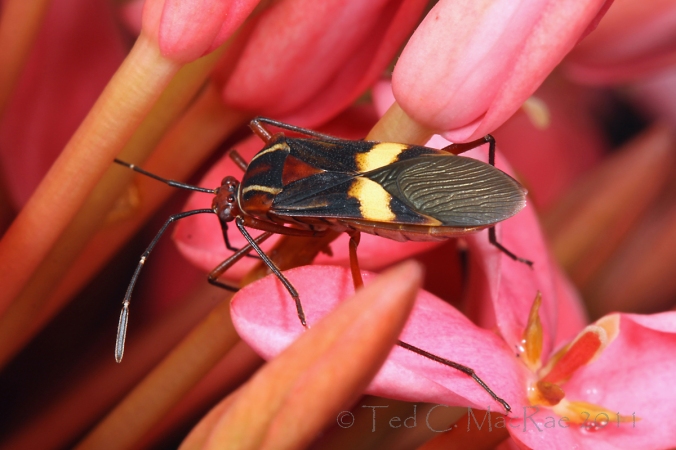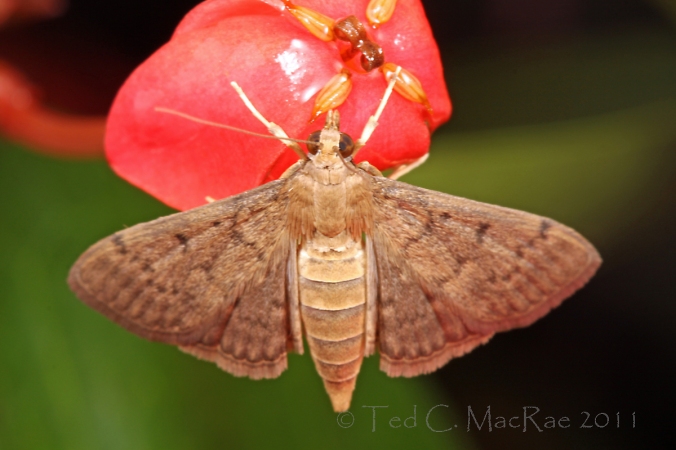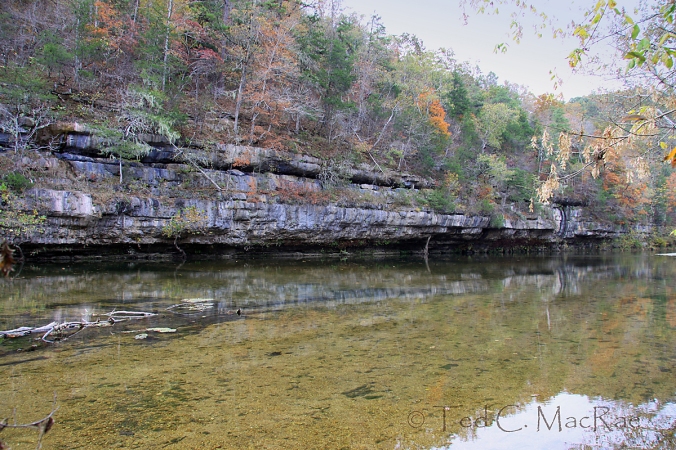I found mais dos percevejos (more of the leaf-footed bugs) on the still-unnamed pink flowering shrub in back of the hotel in Campinas, Brazil. Not only am I convinced that they truly do belong to the family Coreidae (for the reasons mentioned in the earlier post and below), but also that despite the different color patterns shown by the two individuals in that post that they are indeed a single species. I also found the above individual, representing an even more heavily melanized version than the two shown previously. In looking at a large number of individuals on the shrubs (and subsequently encountering them in a different part of Campinas over the weekend), it became clear that there were not just two distinct color forms but a broad range of variability. I could believe maybe two species occurring together on a common resource, but it seems unlikely that each color variation represents a different species. Thus, it now seems that there is one highly variable species visiting these flowers.
I had an idea on how to find the name of this species that almost worked. Rather than Googling “leaf-footed bug” or “Coreidae,” I tried “percevejo” instead, along with Brazil or Brasil. There were 3 or 4 photographs that showed up in the images search that I recognized instantly as belonging to the same species. Unfortunately, none of the links where the photos were found gave any information more specific than family (all, however, agreeing with family Coreidae). I think it’s time to send an email to Harry Brailovsky, a coreid specialist at the Instituto de Biologia (UNAM) in Mexico City.
Photo 1: Canon MP-E 65mm 1-5X macro lens (ISO 100, 1/200 sec, f/13).
Photo 2: Canon 100mm macro lens (ISO 100, 1/200 sec, f/16).
Both photos: Canon 50D, Canon MT-24EX flash w/ oversized DIY concave diffuser. Typical post-processing (levels, color, unsharp mask).
Last minute edit: I just heard back from Harry Brailovsky as I was ready to post (thank you Harry!). The insect is, indeed, a species of Coreidae, which he identified as a member of the genus Hypselonotus. I did some searching online to see if I could find any additional clues as the species identity – I found no images that looked right but did find this key to the Hypselonotus of Costa Rica. The key relies on some ventral characters, and I’m a little uneasy about using it for something from southern Brazil, so I think I’ll just wait until Harry has a chance to look it up when he returns to the museum.
Second update 1/26/11: Harry has confirmed the species as Hypselonotus interruptus, which was mentioned but not included in the key that I linked to above. The only online images I have found of this species are at this link. Either Harry is wrong (unlikely), the photos in the link are misidentified (maybe), or the species is enormously variable (perhaps quite likely).
Copyright © Ted C. MacRae 2011
